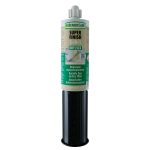The Benefits of Timber Vs PVC-U Frames?

27
July
uPVC has become the de facto material for window and door replacement for years but let’s look at the environmental and economical issues between uPVC and timber frames window.
uPVC is a product that uses a non-renewable resource so cannot be sustainable: oil makes up 43% of the raw material required to make uPVC where timber from well-managed forests is a genuinely sustainable resource which is endorsed by Greenpeace and WWF as the greenest choice for windows and doors. Specifiers should ensure that the timber comes from a credibly certified source endorsed by The Forest Stewardship Council (FSC) or similar organisation. uPVC is made of 57% chlorine which takes 8 times more energy during the manufacturing process than an equivalent timber frame window. A study by the Davis Langdon Association showed that timber has a negative effect of carbon dioxide whereas uPVC due to the greater energy needed to manufacture.
Timber is the greener choice and is fully recyclable and biodegradable, whereas PVC windows generate 43% more waste than timber windows: 82% of total PVC waste goes to landfill, which is non-biodegradable, 15% is incinerated and only 3% is recycled. uPVC waste will rise to 6.4 million tonnes by 2020, when the capacity to recycle it will be a fifth of what will be required; and contains 6 of the 15 most hazardous chemicals listed by European standards. A study by The Alliance for Sustainable Building Products (ASBP), show these concerns.
Specifiers should ensure that the timber comes from a credibly certified source endorsed by The Forest Stewardship Council (FSC) or similar organisation.
Another consideration is warranty, timber windows typically come with a 30-year warranty whereas PVC-U only come with a 10-year warranty. The average anticipated lifespan of PVC-u window according to social housing associations is only 20 years before they have to be replaced and the major defect insurer for housing associations states that uPVC windows must be cleaned every 6 months, lubricated and adjusted annually and have weather stripping and gaskets renewed every 10 years, so much for maintenance free. Perkins+Wills, a global architectural practice, have listed uPVC on their precautionary list of products since 2008 and will specify other suitable materials.
A properly maintained timber window will last for at least 60 years if not much longer. Which leads onto the most cost-effective option, repairing. On average a 70% saving can be achieved by repairing a timber frame window rather than replacing, there is no sourcing of new materials or sending old materials to landfill sites both of which are not environmentally friendly. Specifiers should state that all repairs use a durable system and preventative measures are also implemented, which increases anticipated lifespan and reduce the need for responsive repairs.
A properly maintained timber window will last for at least 60 years if not much longer.
The initial attraction over the years of PVC-u has been the low capital cost but in many 60-year whole life costings have proved that uPVC to be the most expensive option and far from environmentally friendly. So, the environmental and economic benefits of specifying timber window frames can be clearly seen, therefore when deciding on the course of action when uPVC windows have reached their end life, is to replace with timber frame and for rotting timber windows it is far better to repair.
We at Repair Care are one of the leading experts on timber repair we offer services like full window inspection, whole life costing reports, project specification and project monitoring. Contact us at www.repair-care.co.uk












